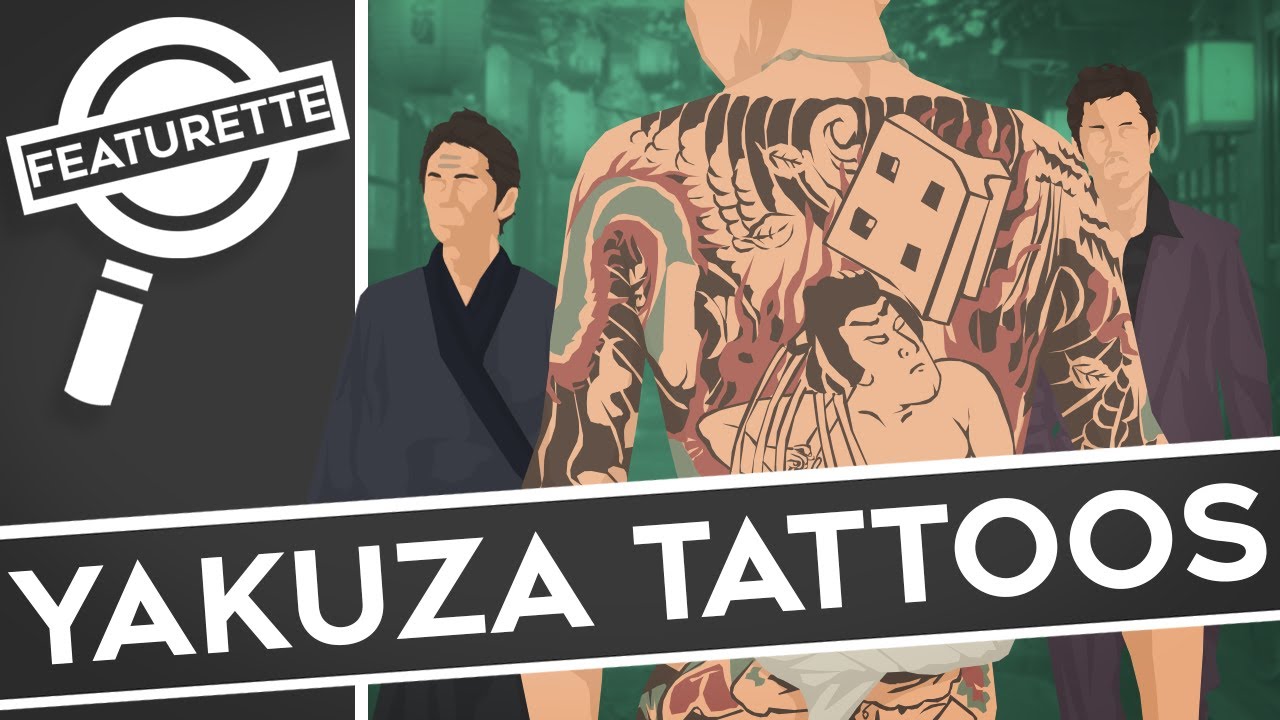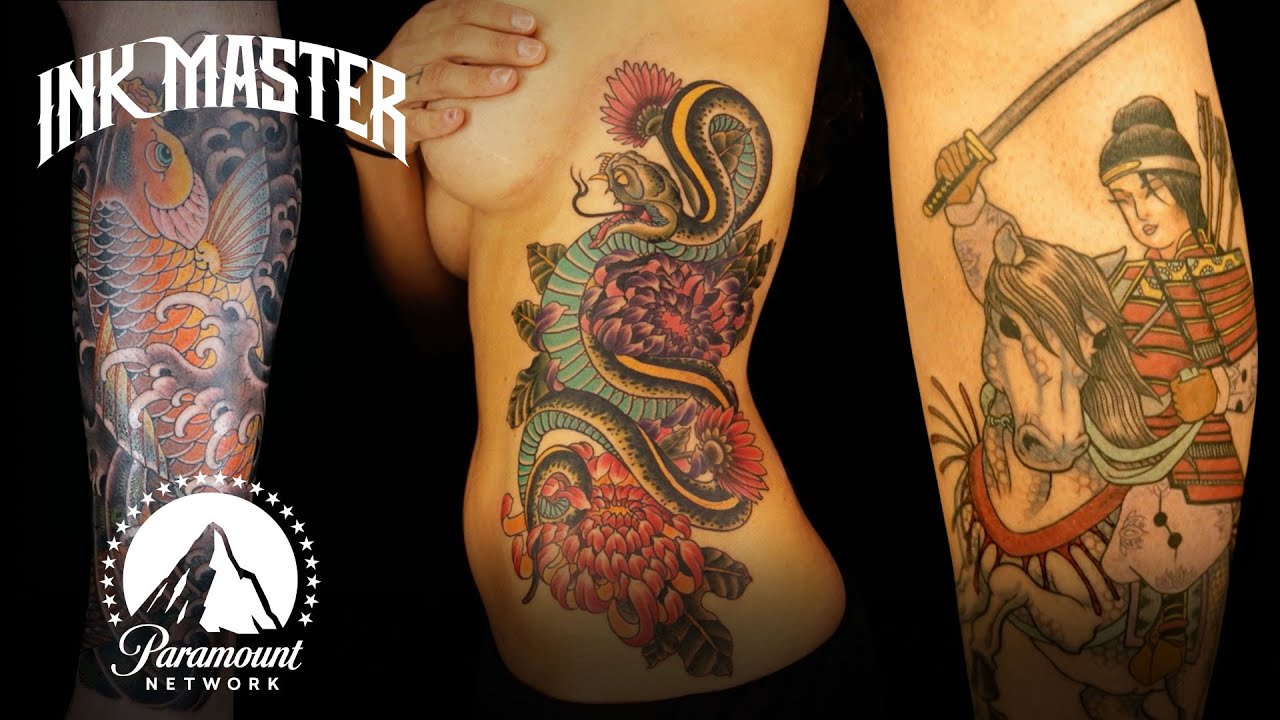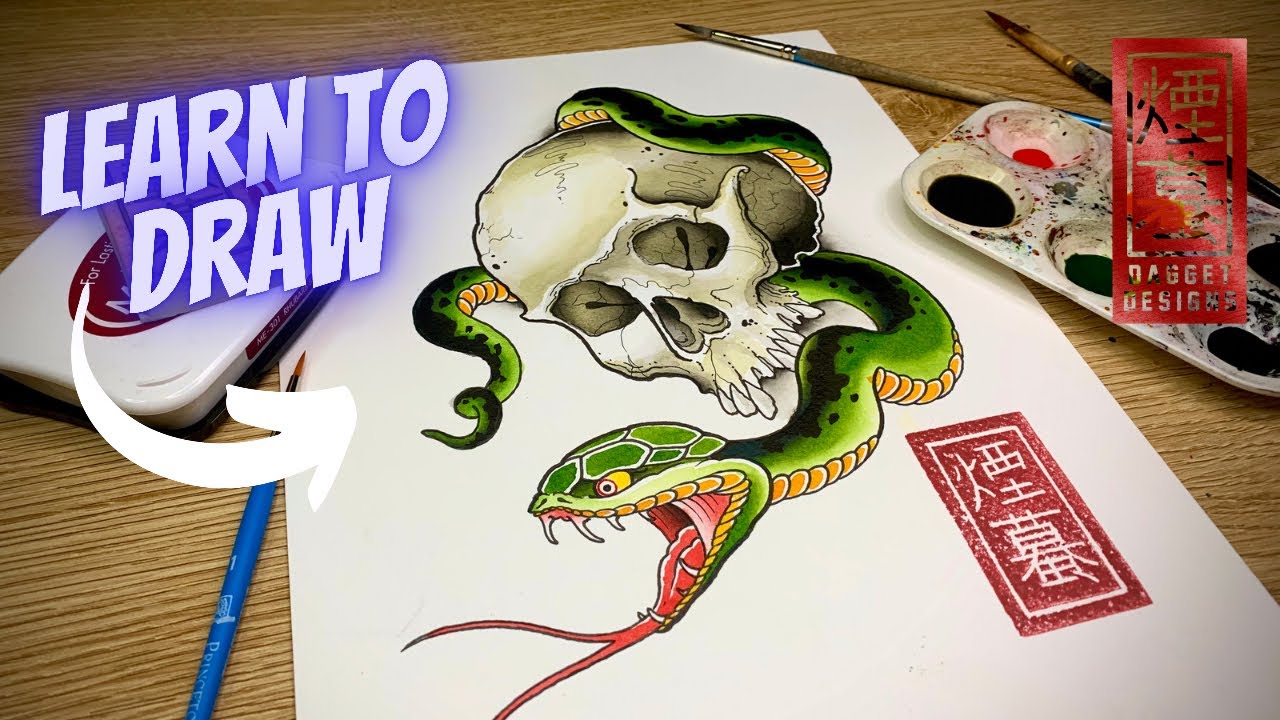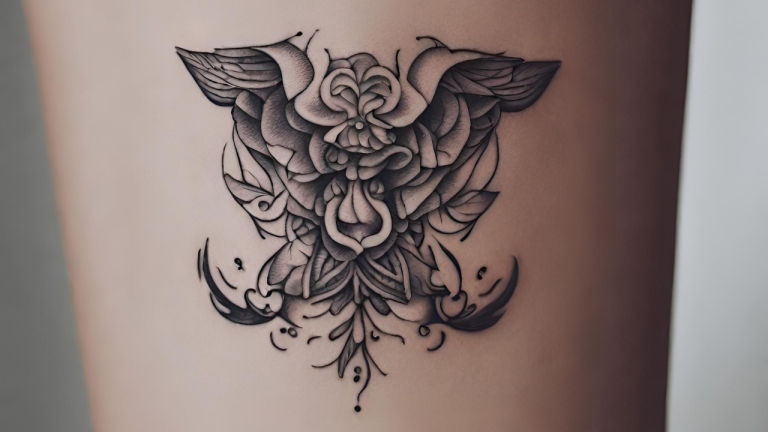Exploring the Symbolism and Meaning of Japanese Snake Tattoos
Create your own unique tattoos and art for your home
Deciding on a tattoo can be tricky, especially when it’s rich in symbolism. Japanese snake tattoos are not only stunning but loaded with deep meanings. Our blog post will guide you through their fascinating origins, cultural importance, and how to pick a design that resonates with your own story.
Discover the allure of these powerful symbols below!
Key Takeaways
- Japanese snake tattoos, also known as Hebi tattoos, are rich in symbolism from protection to wisdom and embody the dual nature of good and evil.
- The artistic craftsmanship behind these tattoos involves traditional techniques like Irezumi and incorporates symbolic imagery such as cherry blossoms and dragons for deeper cultural significance.
- Personalizing a snake tattoo requires reflecting on one’s journey, choosing visual elements that carry personal meaning, and working closely with the artist for a design that resonates on a personal level.
- Placement of the tattoo is important; areas like the forearm or back can provide visibility for larger designs or more intimate locations like the ribcage for discreet symbolism.
- Traditional Japanese elements like specific color meanings and cultural motifs add authenticity to Japanese snake tattoos, making them not just art but also significant symbols within personal storytelling.
Origin and Cultural Significance of Japanese Snake Tattoos
The serpent holds a significant place in Japanese folklore and mythology, representing both good and evil. It is often seen as a symbol of protection and warning, with deep cultural significance.
The serpent in Japanese folklore and mythology
In Japanese folklore and mythology, the serpent holds a complex role that intertwines with cultural beliefs. It’s often depicted as a creature of great power and mystery. Serpents symbolize wisdom, rejuvenation, and transformation due to their ability to shed their skin for new growth.
They embody both positive aspects like protection against misfortune and negative connotations connected to their cold-blooded nature.
Serpentine creatures slither through many ancient tales, where they serve as guardians or omens of change. Their images are heavily integrated into art and religious practices, marking them as crucial elements in understanding Japanese culture.
Hebi tattoos reflect these deep-rooted meanings by offering wearers symbols of strength, knowledge, life cycles, and even defense from bad luck or illnesses. These tattoos are more than just markings; they carry spiritual significance deeply respected within traditional narratives.
Dual symbolism: embracing both good and evil
The Japanese snake tattoo carries a dual symbolism, representing both good and evil aspects. It symbolizes protection against illness and bad luck while also embodying the qualities of wisdom, strength, and change.
In Japanese culture, the snake is revered for its ability to embrace both positive and negative attributes, making it a powerful guardian symbol that reflects the complexities of life.
White snake tattoos hold mystical significance as symbols of purity in Japanese culture. This duality is woven into the intricate designs of Japanese snake tattoos, reflecting the traditional beliefs that seek to integrate both light and dark elements.
The serpent’s representation in these tattoos encapsulates a profound sense of balance between opposing forces – an essential theme deeply rooted in Japanese mythology. Overall, embracing this dual symbolism offers individuals not only spiritual protection but also personal growth through acknowledging life’s contrasting aspects.
Protection and warning symbolism
Embracing the duality of Japanese snake tattoos, the symbolism extends to protection and caution. These tattoos are not just about strength and resilience; they also hold a deeper meaning as protectors against illness, misfortune, and danger.
The serpent’s shedding of its skin embodies renewal and change while signaling a warning or offering guidance to those who bear its image on their skin. With specific rules governing traditional designs and colors holding significant meanings, Japanese snake tattoos serve as guardians against adversity with wisdom, fortitude, and foresight.
Incorporating protective elements in Japanese snake tattoos encompasses not only physical safety but spiritual well-being too. The complexity of these symbolic representations emphasizes the layers of meaning intertwined within this revered art form.
The Artistic Craftsmanship behind Japanese Snake Tattoos
Japanese snake tattoos showcase the artistry and skill of traditional Japanese tattoo techniques. These tattoos are individually tailored to reflect the wearer’s personal journey and story, emphasizing the importance of collaboration with the artist for a meaningful design.
Traditional techniques and styles used
Japanese snake tattoos are crafted using traditional techniques and styles deeply rooted in Japanese culture. Tattoo artists employ intricate line work, bold colors, and detailed shading to bring the serpent to life on the skin. The following elements contribute to the unique craftsmanship of Japanese snake tattoos:
- Irezumi Style: This traditional Japanese tattooing method involves hand-poking or hand-tapping the design into the skin using a wooden handle with metal needles. It emphasizes precision and artistry in capturing the intricate details of the snake.
- Symbolic Imagery: Artists incorporate symbolic motifs from Japanese mythology and folklore, such as cherry blossoms, waves, and dragons, to infuse deeper meaning into the snake tattoo, adding layers of cultural significance.
- Vibrant Colors: Traditional Japanese snake tattoos often feature a rich color palette that includes vivid hues like red and black, representing power and protection, while also incorporating shades of green and blue for naturalistic depictions of snakes intertwining with symbolic elements.
- Dynamic Composition: The flow and movement in the design convey a sense of energy and vitality that is characteristic of traditional Japanese artistry, capturing the essence of the snake’s symbolism as a powerful and transformative creature.
- Detailed Scale Patterns: Artisans pay close attention to replicating the intricate scale patterns of snakes with meticulous precision, transforming each segment into an artistic masterpiece that symbolizes resilience and regeneration.
Tailoring the tattoo to reflect personal journey and story
Personalizing a Japanese snake tattoo to reflect one’s individual journey and story is essential in creating a meaningful and unique design. Incorporating specific elements that hold personal significance, such as symbolic representations of strength, resilience, or spiritual growth, can add depth and authenticity to the tattoo.
By collaborating closely with the tattoo artist and discussing the intended symbolism behind each element, individuals can ensure that their snake tattoo becomes a powerful visual narrative that reflects their personal experiences and aspirations.
Taking into consideration the cultural meanings associated with Japanese snake tattoos will further enrich the design, allowing for a deeply personalized emblem of wisdom, protection, and inner strength.
Careful consideration should be given not only to the visual aspects but also to how these images tie into your personal journey – it’s about translating your experiences onto your body art.
Importance of collaboration with the artist
Tailoring the tattoo to reflect personal journey and story is a pivotal aspect of getting a Japanese snake tattoo. Collaborating with the artist ensures that your unique experiences and symbolism are artfully brought to life in the design.
By working closely with the artist, you can incorporate elements that hold significant meaning to you while drawing from traditional Japanese motifs and colors, resulting in a truly personalized and meaningful tattoo.
Collaboration with the artist also provides an opportunity to benefit from their expertise, ensuring that the intricate details and symbolic meanings are accurately conveyed in your Japanese snake tattoo.
Factors to Consider When Getting a Japanese Snake Tattoo
Consider your personal journey and the symbolism you want to incorporate, visualize the elements and placement for maximum impact, and embrace collaboration with an artist to create a meaningful Japanese snake tattoo that reflects your story.
Read on to discover more about the artistry and symbolism of these stunning tattoos.
Reflecting on personal journey and meaning
When reflecting on a personal journey and meaning for a Japanese snake tattoo, consider the aspects of strength, protection, wisdom, and resilience. Incorporating individual experiences or challenges into the design can symbolize overcoming obstacles and embracing positive change.
The choice of colors and placement should reflect personal significance while honoring the traditional symbolism associated with Japanese snake tattoos.
Incorporating meaningful elements such as family symbols, cultural references, or spiritual beliefs can add depth to the tattoo’s personal significance. It’s important to communicate openly with the artist about the intended meaning behind the design to ensure that it accurately represents one’s unique journey and story.
Visual elements and symbolism to incorporate
When designing a Japanese snake tattoo, incorporating visual elements and symbolism is crucial. Traditional motifs such as cherry blossoms, waves, or dragons can add layers of meaning to the design.
Symbolic elements like scales representing protection and resilience or the shedding of skin symbolizing rebirth can also be incorporated. Intricate patterns and colors reflecting different meanings can enhance the overall symbolism of the tattoo.
Consideration should be given to including traditional colors – for instance, black symbolic of mystery and strength, red signifying passion and good fortune, or white denoting purity and spiritual significance.
Elements from Japanese folklore like mythical creatures or deities associated with snakes can further enrich the symbolism in the design.
Placement for maximum impact
When considering the placement of a Japanese snake tattoo, it is crucial to seek areas that allow for maximum visibility and significance. The forearm stands out as an ideal canvas due to its accessibility, offering a prominent location for showcasing the intricate details and symbolism of the Japanese serpent design.
Additionally, the upper arm provides an expansive surface area for larger, more elaborate depictions, ensuring that the powerful representations associated with snake imagery are boldly displayed.
For those seeking a more discreet yet impactful placement, consider positioning the tattoo on the inner forearm or calf. This allows for personal introspection while maintaining a sense of hidden strength and resilience through this meaningful symbol.
Design Ideas for Japanese Snake Tattoos
Explore the popular colors and styles of Japanese snake tattoos, as well as different placement options to consider. Additionally, learn how to incorporate traditional Japanese elements into the design for a more authentic look and feel.
Popular colors and styles
Japanese snake tattoos commonly feature a vibrant color palette, with shades of red, black, and green dominating the design. Red symbolizes passion and power while also portraying elements of danger.
Black signifies strength, mystery, and protection, complementing the snake’s symbolism as a guardian. Green represents nature, growth, and renewal in Japanese culture; it embodies rejuvenation and vitality when incorporated into the tattoo design.
The styles often seen in Japanese snake tattoos include traditional Irezumi-style designs featuring intricate details and bold lines that showcase the rich heritage of Japanese tattoo artistry.
Contemporary variations incorporating realism or watercolor effects are gaining popularity for their unique visual appeal while retaining traditional symbolism. Additionally, neo-traditional styles offer a modern twist on classic motifs by blending bold outlines with vivid colors to create striking visuals that bring the ancient meanings to life in a fresh way.
Placement options
When considering getting a Japanese snake tattoo, it’s essential to deliberate on the placement for maximum impact. The forearm is a popular choice due to its visibility and symbolism of strength and protection, aligning with the meaning behind Japanese snake tattoos.
Additionally, placing the tattoo on the back or chest allows for larger designs that can incorporate intricate details relating to wisdom and resilience.
Another option for placement is the lower leg, allowing for a dynamic representation of rejuvenation through symbolic elements such as shedding skin. For those seeking a more discreet location, the ribcage or upper arm offer intimate placements while still embodying the rich symbolism associated with Japanese serpent tattoos.
Incorporating traditional Japanese elements
Incorporating traditional Japanese elements into a snake tattoo can add depth and cultural significance to the design. Symbols and motifs inspired by Japanese mythology, folklore, and art can be infused into the tattoo to reflect bravery, protection, good luck, or wisdom.
Traditional colors with specific meanings in Japanese culture such as red for good fortune or blue for protection can also be incorporated to enhance the symbolism of the snake tattoo.
To create an authentic Japanese snake tattoo that embodies tradition and meaning, it is crucial to collaborate closely with a skilled artist who understands the significance of these elements.
By blending traditional Japanese imagery with personal storytelling, a unique and powerful representation of resilience and spiritual connection can be achieved through the snake tattoo.
Infusing traditional elements into a snake tattoo not only honors the rich cultural heritage but also adds profound symbolism to this timeless art form.
Conclusion: Embracing the Symbolism and Beauty of Japanese Snake Tattoos
Embracing the Symbolism and Beauty of Japanese Snake Tattoos
Exploring the rich symbolism behind Japanese snake tattoos reveals layers of cultural significance. The serpent, deeply rooted in Japanese folklore and mythology, embodies both good and evil traits.
Understanding the unique artistic craftsmanship involved in tailoring these tattoos to personal stories adds depth to their meaning. Delving into design ideas such as popular colors, styles, and placement options allows for a personalized expression of this powerful symbol.
FAQs
1. What do Japanese snake tattoos symbolize?
Japanese snake tattoos often represent protection, good fortune, wisdom, and change. They carry deep symbolism rooted in Japanese tradition and culture.
2. Can a Japanese snake tattoo be a sign of strength?
Yes! A Japanese snake tattoo design can signify strength and resilience, embodying the serpent’s symbolism as a powerful creature in Japanese folklore.
3. Where on my body should I get a traditional snake tattoo?
Forearm tattoo ideas are popular for their visibility and the space they offer for detailed designs like traditional Japanese snake tattoos.
4. Are there specific meanings behind different Japanese snake tattoo designs?
Indeed, each element of a Japanese Snake Tattoo may have its own unique meaning – from representing courage to life force – deeply connected to historical stories and myths found in Japan.
5. Is getting a Japanese snake tattoo tied to any particular cultural traditions?
Getting this type of ink ties back to rich historical significance; it respects the time-honored practices present within the art form of traditional tattoos in Japan.










